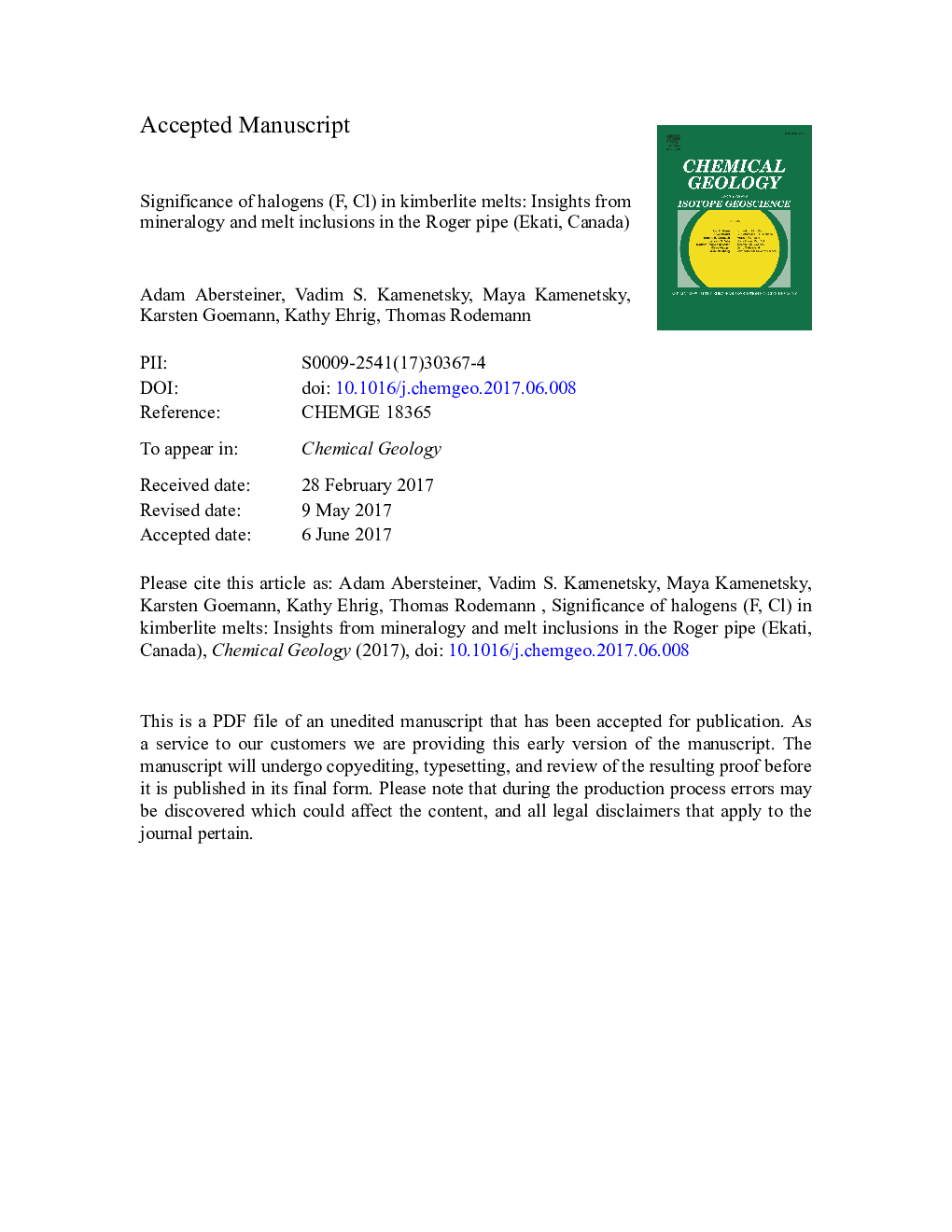| Article ID | Journal | Published Year | Pages | File Type |
|---|---|---|---|---|
| 8910414 | Chemical Geology | 2018 | 57 Pages |
Abstract
Comparisons between halogens and other trace elements of similar compatibility (i.e. F/Nd and Cl/U) in the Roger kimberlite and their respective estimated primitive mantle abundances show that halogens should be a more significant component in kimberlites than typically measured. We propose that fluorine in the Roger kimberlite was magmatic and was redistributed during hydrothermal alteration by Ca-bearing serpentinising fluids to produce the observed bultfonteinite/fluorite assemblages. Based the compositions and daughter mineral assemblages in primary melt inclusions and reconstructed halogen abundances, we suggest that Cr-spinel, monticellite and apatite crystallised from a variably differentiated Si-P-Cl-F-bearing carbonate melt that was enriched in alkalis/alkali-earths and highly incompatible trace elements.
Related Topics
Physical Sciences and Engineering
Earth and Planetary Sciences
Geochemistry and Petrology
Authors
Adam Abersteiner, Vadim S. Kamenetsky, Maya Kamenetsky, Karsten Goemann, Kathy Ehrig, Thomas Rodemann,
